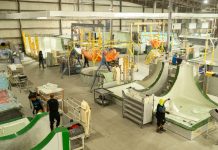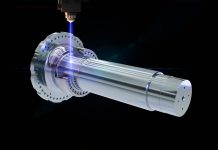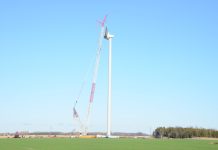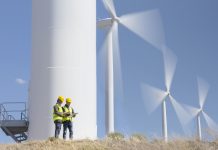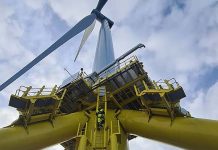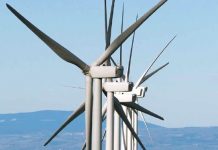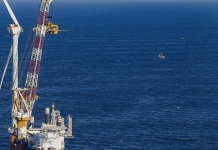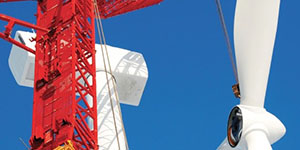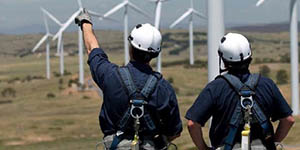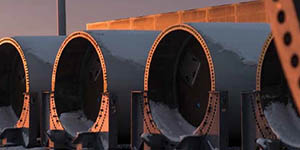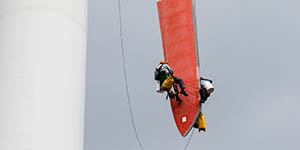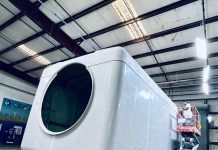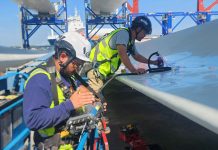It may be stating the obvious, but the construction of a wind turbine — sooner or later — will involve a big hole in the ground.
However, as simple as it may sound, the process of pile driving for the wind sector and other industries is far more complex with variables that need to be researched and calculated.
Since its inception, GRL Engineers, Inc., has been involved with driven pile testing and the quality assurance analysis results of pile driving for almost half a century.

GRL Engineers’ sister company, Pile Dynamics, Inc., developed the first pile driving analyzer in 1972, which became the company’s mainstay, according to Glenn Santulli, project engineer with GRL Engineers. Pile Dynamics essentially sold the product to companies. But it soon became obvious that a special expertise would be needed to help companies with the equipment, which led to the development of GRL Engineers.
“They realized four years later — if you have these special products — you’ll need to have special consultants or engineers who know how to use these products and show everyone else how to use them as well,” he said.
Deep foundation consultants
With a focus mainly on driven piles and dynamic testing, GRL Engineers evolved to become deep foundation consultants and experts, according to Santulli.
“But it all started in the driven pile world,” he said. “And then, when you start talking about driven piles — probably back in the early ’80s — we began offshore driven pile testing.”
GRL Engineers’ offshore pile testing led to the company’s involvement in the offshore world, mostly in the oil and gas sectors, according to Santulli.
“We really got involved with offshore mostly in the Middle East, which was a main market of ours in the early ’90s and 2000s,” he said. “But at the end of the day, it’s all pile driving, even on land or offshore.”
From oil and gas to wind
GRL Engineers’ expertise with the oil and gas industry led to the company working with the wind industry, according to Santulli.
“We have tested several piles over the last 20 or 30 years for wind farms on land, basically the driven piles for wind farms on land,” he said. “In November and December of 2023, we did pile installation monitoring for one of the first offshore wind farms on federal waters.
That monitoring led to the largest offshore monopile ever monitored, according to Santulli.
“That was the biggest offshore wind endeavor we’ve done,” he said. “We did monitoring on that. But we’re also involved with some consulting where we’re looking at different drivabilities of monopiles and jacket piles for the offshore wind industry.”
In addition, GRL Engineers was also involved with a test program and research for the offshore wind industry in New Jersey where the company looked at different soil conditions — specifically glauconite — where the company hopes to learn on land how it will affect offshore turbines, according to Santulli.

Even with its current focus on wind energy, Santulli pointed out that GRL Engineers continues to be involved with all industries in need of deep foundation testing, analysis and consulting services including oil and gas.
“We definitely want to be involved with all deep foundations, whether it’s oil and gas or wind or anything,” he said. “We’re in the deep foundations industry and specifically specialize in driven pile testing and dynamic testing of all foundation types so we want to be involved in all aspects, all industries. I don’t think there’s one preference over the other. If it’s driven piles, if it’s offshore, we want to be there.”
With its wind involvement, Santulli said GRL Engineers has expanded their expertise in the way wind turbines are constructed compared to oil and gas structures, with expertise in all offshore pile driving including monopiles and jacket piles.
Expanding its expertise
Since the 1980s, GRL Engineers has focused on jacket piles and doing drivability and consulting work on the jacket piles used primarily in the oil and gas industry.
But in the last few years, GRL Engineers has expanded its focus to monopiles, according to Santulli.
To hold up a wind turbine, there are several options. A jacket-style pile would be the more traditional method, where a “jacket” made up a of a triangle of legs would be lowered to sit on the seafloor. Piles are driven into the legs, which have a much smaller diameter. The turbine would sit on this structure.
“It’s designed there; it’s wider on the bottom, and it’s pointier at the top,” he said. “You would use that, and you would create this structure that the actual turbine would sit on. Jackets have been used for probably 60 or 70 years or more. That’s more of the old-school technology. They usually are very quick — you place them in the water; you drive piles, and you’re done.”
The challenge with wind turbines in a wind farm, is that there will be a lot of structures that cover a lot of area, which would make traditional jacket piles cost prohibitive, according to Santulli. Because of this, monopiles are being used more commonly now.
“This means one pile is driven and it’s the foundation for the entire turbine, rather than a structure and six or eight piles,” he said. “It is more cost-effective, but there is more risk, because you can get pile refusal early. If you had six or eight piles, if you have an issue with one or two, that’s not the entire foundation. With monopiles, if you have an issue with one, that’s your entire foundation. Monopiles are more of a newer thing for the U.S., but Europe’s been using them for probably 20 or 30 years.”
Every job is unique
When working with customers, Santulli said that each case and every location is going to be different.
“Every site’s a little bit different, but you can use prior experience to evaluate the latest and greatest problem and figure out the most practical solution,” he said.
Part of the challenge is sometimes GRL Engineers isn’t consulted until problems in the initial construction arise, according to Santulli. “One downfall of the offshore industry is that we’re not really involved until things go bad,” he said.
When problems arise in a project, GRL Engineers are called in to solve them, which Santulli said pulls from the company’s expertise combined with its experience.
Sometimes different soil conditions, a different vessel, or different installation contractors make it so methods applied in one job won’t work for another. But a situation can be approached using previous methods successfully, according to Santulli.
“You always want to use previous successful experience to apply to something new, but at the same point, each project brings a new location and new soil conditions, so often times nothing is the same,” he said.

Diversity and excellence
Building on its reputation for being involved with one of the first U.S. offshore wind farms in federal waters, Santulli said he is anxious for GRL Engineers to further emerge itself in offshore wind development in the U.S. in hopes that overseas companies wanting to develop offshore energy will see the advantages of domestic consultants.
“We would be happy to get involved, and we’d happy to be able to apply our experience and expertise to the industry,” he said. “Having the knowledge from oil and gas, where there’s more of a diverse background, we could bring that more diverse background to the wind industry rather than other consulting companies that only have known offshore wind for the last 20 years.”
In order to do that, overseas wind-farm construction companies coming to US to install offshore wind farms on US waters will need to pair with more U.S.-based companies rather than the previous consulting companies from Europe that typically only perform consulting for offshore wind, according to Santulli.
“One spot where the industry can really grow and improve is — on the engineering and consulting side — get more U.S.-based companies involved and make it a little more open and public for more companies. Rather than keep everything hidden including the installer, the vessels and the installation of the specific pile type hidden, allow for more U.S.-based companies looking to get involved become more aware of the ongoing construction and promote U.S.-based consulting companies to become more involved with the technical engineering decisions,” he said.
In order to accomplish this, Santulli emphasized it was important for wind companies to see the advantages GRL Engineers brings to a table being a diverse consulting company based in the U.S. with decades of experience. For example, GRL Engineers is in a better position to evaluate the suitability jacket piles without having any bias against them which many offshore wind consulting companies typically have (favoring monopiles).
“A European company may insist on monopiles because it’s always used them, but is that really the most cost-effective or best engineering solution or best option to mitigate pile refusal risk, or is that because that’s what you’re most familiar with?” he said. “GRL looks at: What’s the best solution? I think we’re less biased than maybe a company that’s only focused in offshore wind, where we want to get involved with all industries.”
More info www.grlengineers.com



